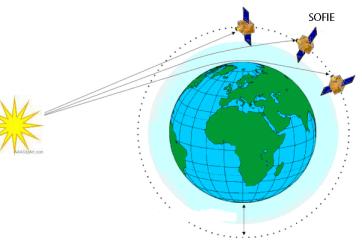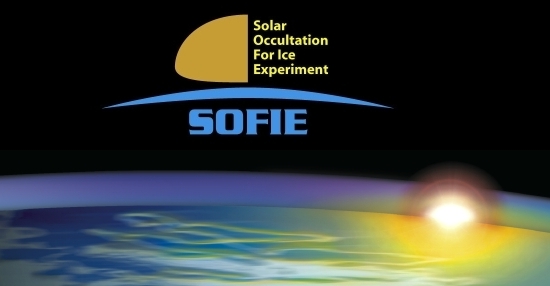During
an occultation event, solar rays are refracted by the
Earth's
atmosphere towards higher densities (see Figure 1).
Because the refraction angle is directly related
to the
atmospheric density profile, measured refraction angles can be
used to
retrieve temperature profiles. Profiles of atmospheric refraction angle
will
be
determined from the SOFIE sun sensor with sub-arcsec precision, and
subsequently used to retrieve temperature versus altitude with a high
degree of
accuracy
and vertical resolution. This basic
approach was pioneered using Global Positioning
Satellite
(GPS)
data. A retrieval based on simulated SOFIE refraction angle
measurements is shown in Figure 2. These results suggest that
SOFIE refraction angle temperatures will have better than 2 K accuracy
at altitudes below 50 km.
|

Figure
1. Bending
of solar rays during an occultation.
|



